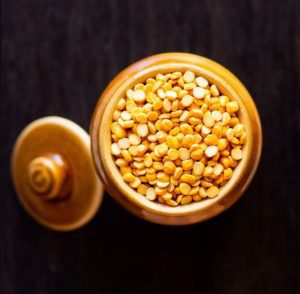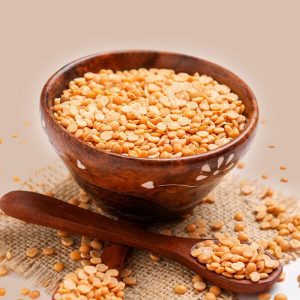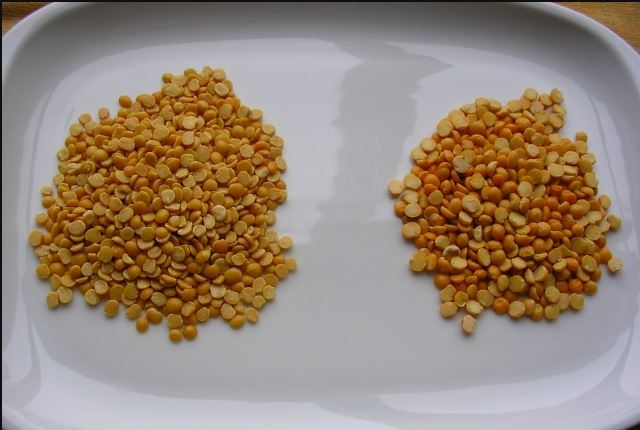The Open Magazine
Delicious Keto Recipes for a healthy lifestyle
Chana Dal vs Toor Dal. Wondering about the toor dal and chana dal difference? Here, we take a look at the comparison between these two types of lentils – nutritional value, taste, and more!
Weight loss recipe: Keto Almond Flour Roti Recipe or Weight Loss Roti At Home
Toor dal and Chana dal are two popular types of lentils that are commonly used in Indian cooking. Each offers a unique flavour, texture, & set of Nutritional benefits. In this article, we take a closer look at the differences between toor dal and chana dal to help you decide which one is best for your meal.
Chana Dal vs. Toor Dal
Toor dal is most suitable for use in soups & curries due to its creamy texture and mild flavour that complements both sweet and savoury dishes.
Chana dal makes an ideal ingredient in stews, curries, and side dishes as it has a slightly more intense flavour than toor dal which works well with the spices used in these dishes. Both types of dal cook quickly, So they are great ingredients for weeknight meals.
What is Chana Dal and How to Cook It?
Discover the deliciously hearty taste of chana dal with this quick guide! Learn what this pulse is, how to cook it, and why you should add it to your menu today.
Chana dal is a delicious, nutritious pulse that can be used in many different dishes. Packed full of Vitamins & Minerals Chana Dal has a unique nutty flavour and can be used in soups, curries, salads, and even desserts. Learn about the benefits of adding chana dal to your diet and how to cook with it today!

What is Chana Dal?
Chana dal is a split pulse from the legume family. It is closely related to chickpeas, lentils, & peas, But has a nuttier flavour and smaller size that makes it ideal for adding texture and flavour to dishes. When cooked, chana dal is creamy but retains its shape – making it an excellent addition to curries, salads, rice dishes and more!
What Are the Health Benefits of Chana Dal?
Like other pulses, chana dal is a nutrient-dense food that offers numerous health benefits. It is an excellent source of protein & fibre, as well as vitamins and minerals such as zinc, magnesium, iron, calcium, and vitamin B6. Additionally, chana dal is low in calories and fat but high in carbohydrates – making it a great energy source. Eating chana dal may help to lower cholesterol levels, manage blood sugar levels, improve digestion, and offer protection from some types of cancer.
How to Prepare and Cook Chana Dal:
Chana dal is incredibly easy to prepare and cook – Just make sure to rinse it thoroughly first. Simply boil the lentils in a large pot with 8-10 cups of water, until they become tender – this should take approximately 20 minutes. Then, reduce the heat and simmer for 10 More minutes before adding in garlic, salt, turmeric, ginger, onions, spices or herbs of your choice for added flavour. Generally, chana dal can be boiled with other ingredients or cooked separately and added at the end of the cooking process. When finished cooking, drain off any excess liquid and serve!
What is Toor Dal?
Toor dal is a popular, nutritious pulse that’s used in a variety of recipes across India, varieties of south Asia and beyond. Learn more about this versatile ingredient here.
Toor dal, also known as tuvar dal or tuvara paruppu, is a type of small, yellow lentil that’s popular in Indian and South Asian cuisine. This nutritious pulse is high in protein and fiber and can be used to make a range of flavourful dishes.

How to Cook Toor Dal:
Toor dal is fairly easy to cook and can be added to a variety of dishes. It’s usually boiled in water until it becomes soft and mushy, then drained and tempered with oil and spices like turmeric, cumin, mustard seeds, curry leaves, and cardamom. Alternatively, it can also be pressure cooked for faster cooking time. Toor dal goes especially well in soups, stews, curries or rice dishes.
Tips for Buying and Storing Toor Dal:
When shopping for toor dal, look for ones that are uniform in size and color. Avoid those with discolouration or bacteria present in them, as these will reduce the nutritional value. Once home, store your toor dal in a cool, dry place away from direct sunlight and use it within a couple of weeks for the best flavor and nutrition. For longer storage periods, you can refrigerate it for up to two months.
chana dal vs toor dal nutrition :
Toor and chana dal both offer a unique nutritional profile.
Toor dal is high in protein, iron, potassium, magnesium and phosphorus. It is also an excellent source of dietary, fibre which helps to regulate digestion.
Chana Dal has similar nutritional content as it contains a good amount of proteins & complex carbohydrates as well as minerals like calcium and iron. However, chana dal contains much less fibre than toor dal, making it a better choice for those who are looking to reduce their overall fibre intake.
chana dal vs toor dal difference in texture and flavour :
Toor Dal has a mild, nutty flavour and a soft texture that makes it easy to cook with. It can be used in soups, curries, and other dishes that require added creaminess without compromising on the taste.
Chana dal has a slightly more intense flavour than toor dal & It is most often used in stews, curries and side dishes due to its firmer texture.
Cooking Times and Tips: Chana Dal vs. Toor Dal
Toor dal cooks relatively quickly compared to other types of dal, usually taking around 20 minutes.
Chana dal can take a bit longer to cook and requires more water; about 40 minutes of simmering will ensure the grains have softened enough for use in curries. For both types of dal, be sure to add enough salt and spices while cooking – that way, you’ll get the most flavour out of them!
Availability and Cost: chana dal vs toor dal
Toor dal is easy to find and usually inexpensive, making it a popular choice for everyday cooking.
Chana Dal, on the other hand, Can sometimes be harder to find and may carry a higher price tag due to its shorter supply. However, you can find either type of dal in any Indian grocery store. If all else fails, look online – there are plenty of Websites selling both types at reasonable prices!
